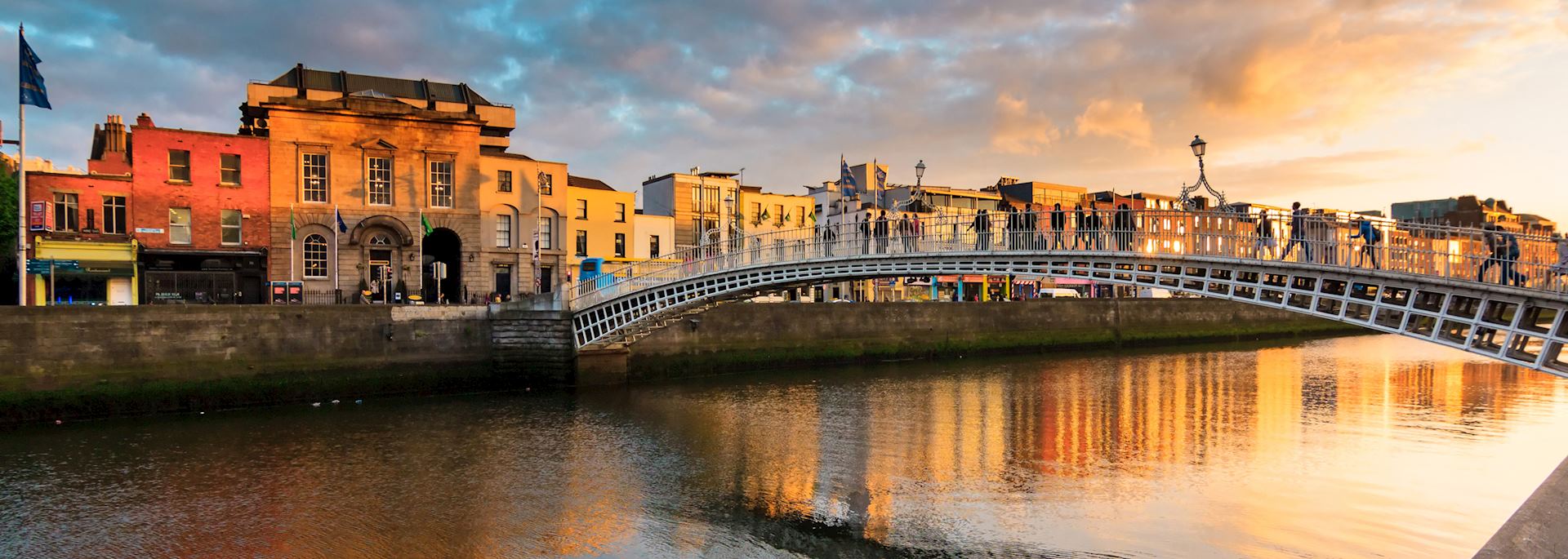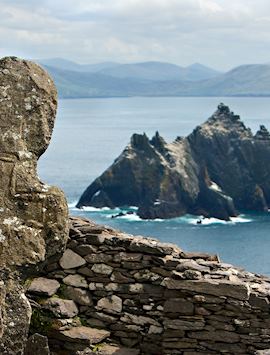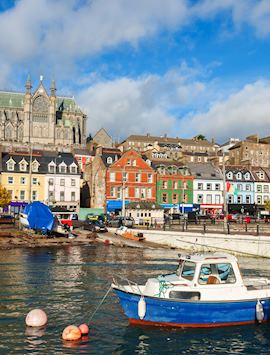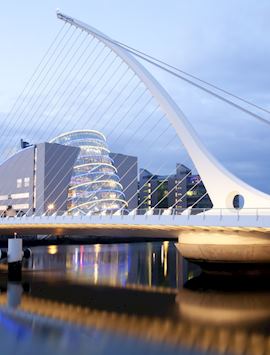By Ireland specialist Max
Dublin was the first European city I ever visited as a child and it still holds a special place in my heart. It lacks the haughty grandeur and iconic monuments of other European capitals, but it makes up for it with an unpretentious charm and youthful energy. And, despite its village-like dimensions, it still boasts notes of culture, such as Trinity College’s custodianship of the medieval Book of Kells.
It also holds an outsized place as a setting for important events in Irish history, from the rise of Irish Christianity on the site of Saint Patrick’s Cathedral to the 1916 Easter Rising.
Things to do in Dublin: my recommended highlights
Trinity College, the Book of Kells and Long Hall
Though it’s set in the heart of Dublin, Trinity College feels separate from the city — its many buildings face onto tranquil green squares with few public entrances. The insulated feeling and pillared stone buildings of the university (the oldest in Ireland) earned it a place on Forbes’s list of most beautiful college campuses in the world.
The university embodies the city’s combination of lively energy and weighty history. The students support the vibrant Temple Bar, a popular district filled with pubs, galleries and nightclubs, as well as institutions dedicated to modern culture, like the Irish Film Institute and the National Photographic Archive. But inside the Trinity College library, you find two of the country’s most venerable and venerated symbols: the Book of Kells and the Trinity College harp.

The Book of Kells is a richly illuminated medieval manuscript of the four gospels of the New Testament. The intricate illustrations include interlaced zoomorphic (animal) designs, Celtic knot work and human figures, and many experts consider the book as the pinnacle of Western calligraphy. Visitors come from around the world to admire the still-vibrant pages, which are displayed in environmentally controlled cases.
The Long Hall is located just past the Book of Kells exhibit. The timbered barrel-vaulted ceiling stretches for 65 m (213 ft) above two-tiered galleries, filled with 200,000 books and lined with stately marble busts. The room’s hushed atmosphere provides a peaceful retreat from the crowds around the book.
The Long Hall also holds the Trinity College harp, a 14th- or 15th-century cláirseach (wire-strung early Irish harp). Considered one of the oldest surviving examples of Gaelic harps, its elegantly curved frame served as the model for the national symbol, which still appears on heraldry and Euro coins.
A behind-the-scenes tour of Saint Patrick’s Cathedral

Legend holds that Saint Patrick baptized people into Christianity at a well located on the site of Saint Patrick’s Cathedral as early as 500 AD. The elegant spires and narrow stained-glass windows of Saint Patrick’s date back to the 13th century, and the building continues to hold an important role as the national church.
The imposing gray Gothic exterior contrasts with the brightly patterned floor, especially in the Lady Chapel. More than 500 people are buried under the floor and in the cemetery outside, including Jonathan Swift, renowned author and dean of Saint Patrick’s from 1713 to 1745.
I took a private behind-the-scenes tour guided by the cathedral’s verger (a layperson who assists in the ordering of religious services). He told me about some of the building’s long history as we made our way through the back corridors and up spiral staircases to inspect the sophisticated mechanisms that work the bells and clocks.
The top of the tower is one of the highest points in the city and each side offers a sweeping view in one of the cardinal directions. On a clear day, you can see the Wicklow Mountains to the south and Dublin Bay to the east, but I like the view to the north, overlooking Saint Patrick’s Park. Most visitors view the cathedral from the park, so it was a special pleasure to do the reverse and look down at the park’s tidy brick paths between the cheerful flower beds.
Guinness Storehouse

There are few sights more classically Irish than a pint of rich Guinness stout, topped with a creamy head of foam. Like other beer lovers from around the world, I made my pilgrimage to the ponderous black gates of the Guinness Storehouse. The tour begins at an enormous wooden sculpture of a pint of beer, its sides carved with scenes and symbols, and continues through the long history of the renowned brew, including explanations of the production process.
The price of admission includes a voucher for one free pint and you might be tempted to save it for the storehouse’s glass-sided Gravity Bar, which has 360-degree views of the city. Instead, I suggest going to Arthur’s Bar on the fifth floor. Named after the company patriarch, the small pub has a more relaxed feel, with live music and a drinks menu that includes special variants. I recommend trying Guinness infused with blackcurrant liqueur — a way to lighten the notoriously heavy stout.
Dublin’s lesser-known highlights
Green spaces in Dublin

Even in the city, Ireland has plenty of green. On sunny days, locals and visitors alike flock to Saint Stephen’s Green, a Victorian-era park arranged around a formal garden. However, I prefer Iveagh Gardens, a smaller park on Clonmel Street that is hidden from view by surrounding buildings. Designed in 1865, the gardens include unusual features, like the Cascade, an artificial waterfall that spills over an immense rockery created with stones from each of the country’s 32 counties. Antique roses fill the beds of the Victorian rosarium, their perfume stronger and sweeter than modern hybrids.
A short cab ride to Glasnevin, to the north of the city, brings you to the National Botanical Gardens. The area’s acidic soil is well-suited for orchids, and the gardens have a long pedigree of raising rare varieties. Other highlights include a double line of yew trees, known as Addison's Walk, which dates from the 1700s, as well as the Great Palm House, a Victorian steel-and-glass greenhouse that closely resembles a vintage bird cage.

Adjacent to the gardens is the Glasnevin Cemetery. Among the forest of tilted headstones and elaborate Celtic crosses, you can find the final resting place for many of Ireland’s notable figures including Michael Collins, the revolutionary leader and politician.
The Rebellion Walking Tour and Kilmainham Gaol
Much of Irish history is defined by the country’s struggle to gain independence from the United Kingdom. On Easter week 1916 a small band of armed insurrectionists declared Ireland an independent republic. The resulting battle, which became known as the Easter Rising, was deadly and destructive and helped define decades of Irish politics.
Lorcan Collins and Conor Kostick, authors and historians, took me on a walking tour of sites that were important to the rebellion. They helped set the Rising in historical context and painted a vivid (if grim) word picture: combatants shooting at each other across the River Liffey while students continued to study cocooned in the calm of Trinity College.

The captured leaders of the Rising were held at Kilmainham Gaol, a hulking stone building with a carving of five chained snakes over the entrance. The yawning three-level main hall echoes unpleasantly under an iron-vaulted ceiling. For more than a century, the British authorities used the prison to hold not just revolutionary leaders but also ordinary men, women and even children as young as seven.
My visit felt like a walk on sacred ground, to see where so many had suffered and died over the years. Small crosses and signs mark the sites of some of the more notable executions that were held here. The cells were cramped, dark and unheated, little more than miserable holes, and peering into them gave me a shiver of dread.
Best places to stay in Dublin
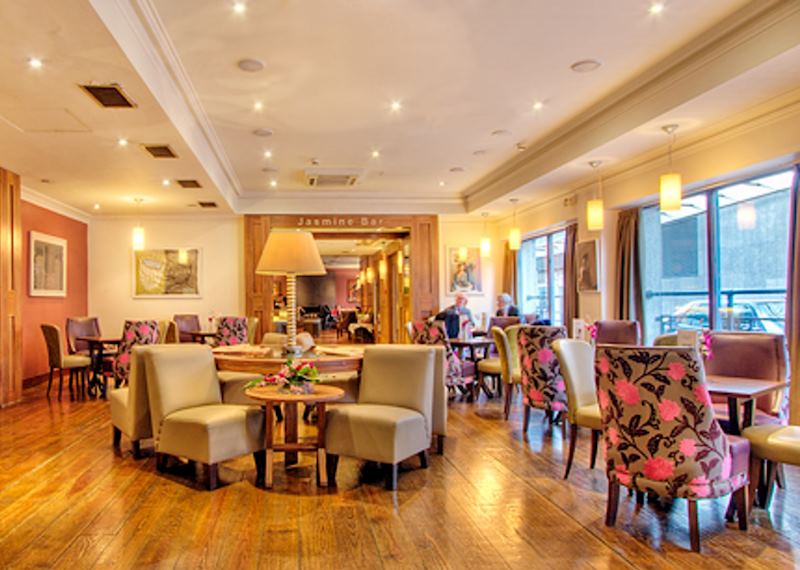
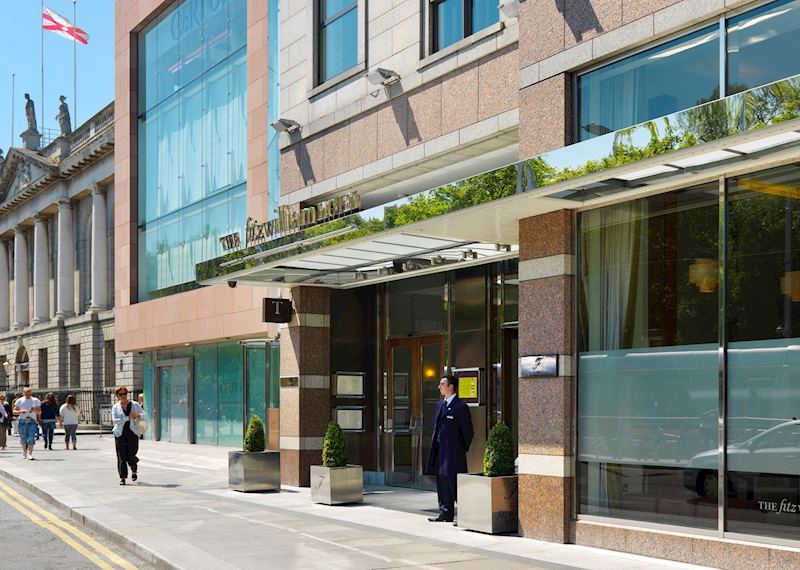
The Brooks Hotel on Drury Street provides an excellent base for exploring the city without being too close to any raucous bars. Head concierge, Connor, offers a warm welcome and detailed knowledge of the city’s cafés, pubs, and restaurants, and the hotel’s own Francesca’s Restaurant serves the best full Irish breakfast I’ve eaten to date.
Located in the heart of the city, The Fitzwilliam Hotel offers excellent views of Saint Stephen’s Green and bright, spacious rooms. The hotel has both a spa and the Inn on the Green, its own in-house pub that also serves afternoon tea.
What to eat and drink in Dublin

Dublin’s thriving restaurant scene includes both the latest in fusion cuisine and old-fashioned meat-and-potatoes meals.
Guinness is the best-known beer in the city, but not the only one. The Galway Bay Brewery operates a clutch of brewpubs across Ireland, which stock a range of local beers. I suggest the Beer Market, on High Street in Christchurch, and Against the Grain, on Wexford Street. Both serve local brews on tap, including Althea, a hoppy American-style pale ale, and Of Foam and Fury, a double IPA, as well as heavier stouts and porters. I usually order a flight so I can sample a wide variety in one sitting.
Boxty is a traditionally Irish dish, a potato-based pancake somewhere between a latke and a scone. Gallagher’s Boxty House in the fashionable Temple Bar district puts a twist on these humble little cakes, stuffing them with everything from vegetarian chili to beef medallions with a creamy mushroom sauce. It’s very popular with the locals, so be sure to call ahead for reservations.
I’m particularly fond of Irish milk, cream, butter and, especially, ice cream. And my preferred ice cream comes from Murphy’s on Wicklow Street. The Dingle-based creamery offers the standard options, like coffee and butterscotch, but also a range of more unusual flavors, including caraway, gin, Dingle sea salt, and Irish whiskey.
Best time to visit Dublin
The weather is best in April and May, which allows you to avoid the summertime crowds. September and October also have good weather and are great times to visit.
Start planning your trip to Dublin
Start thinking about your experience. These itineraries are simply suggestions for how you could enjoy some of the same experiences as our specialists. They're just for inspiration, because your trip will be created around your particular tastes.
View All Tours in Ireland
